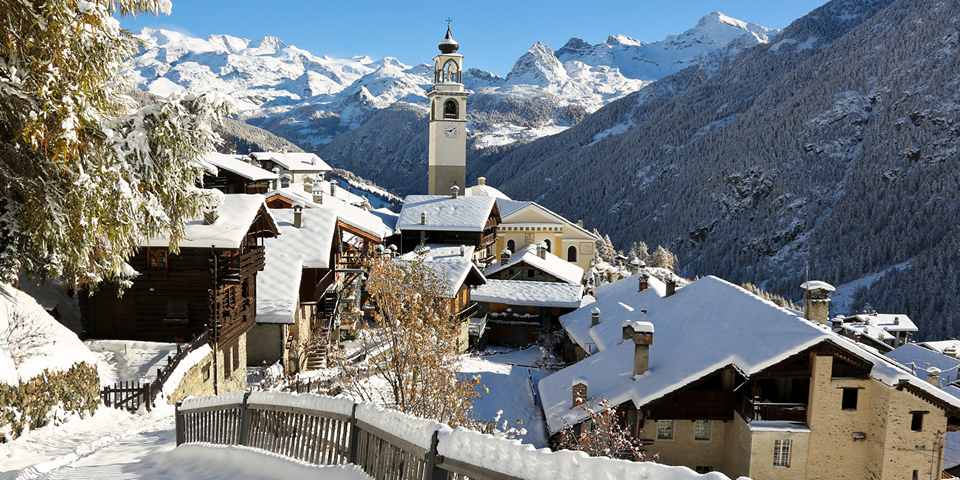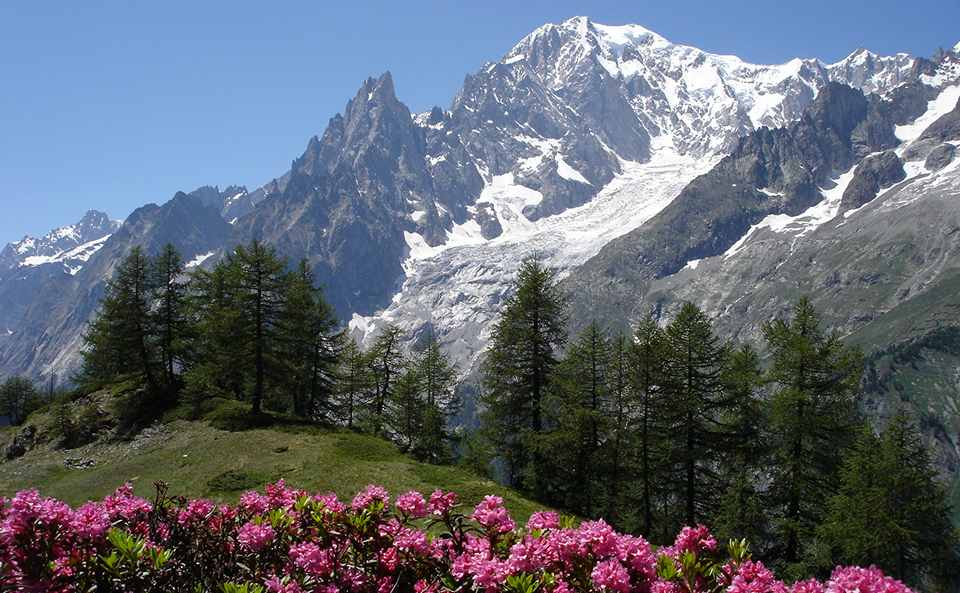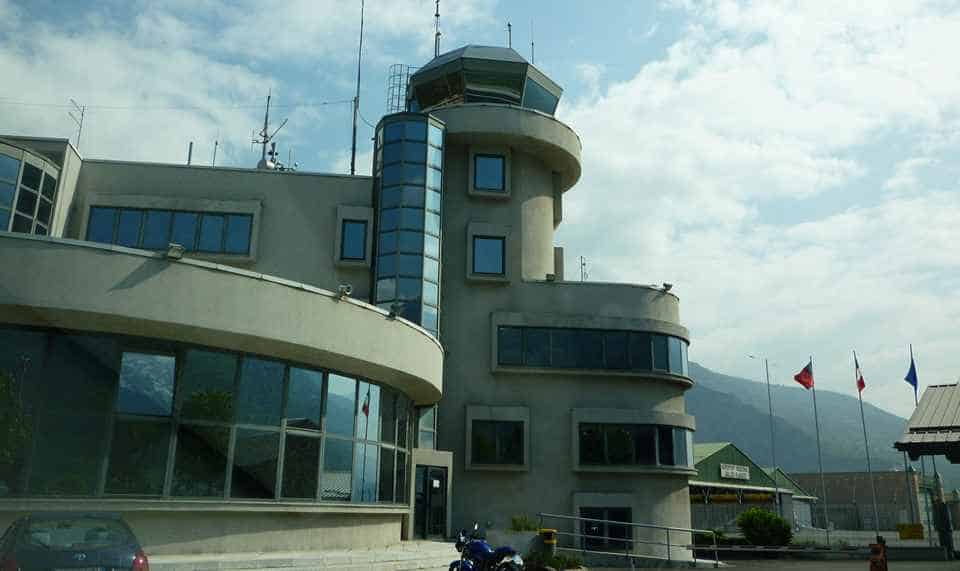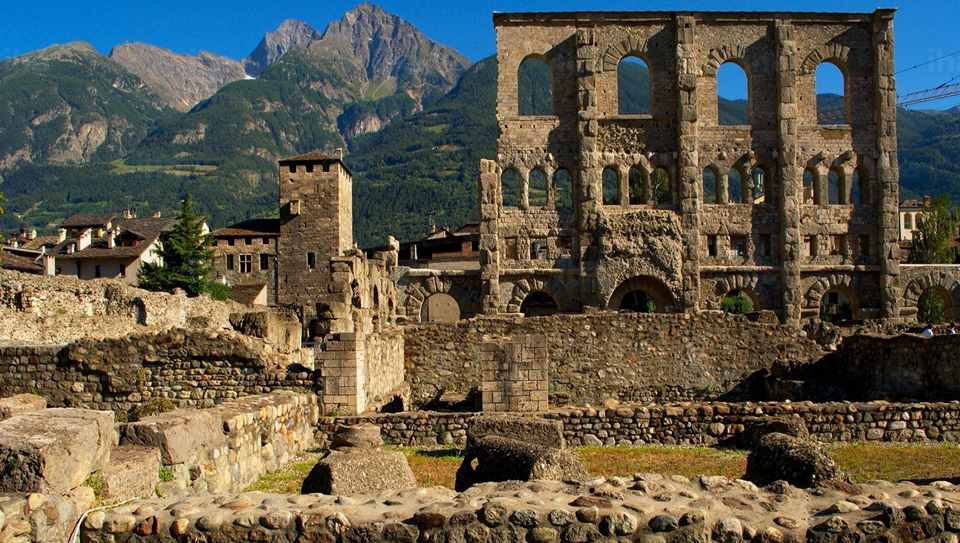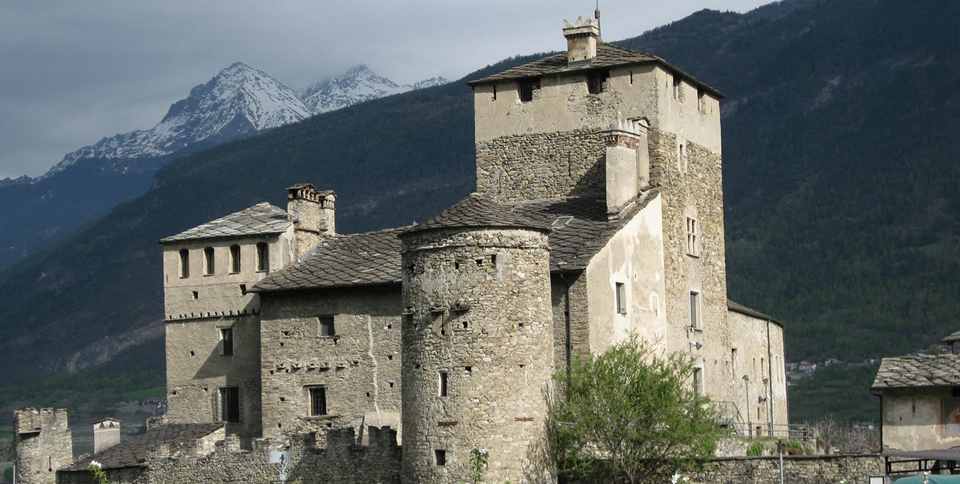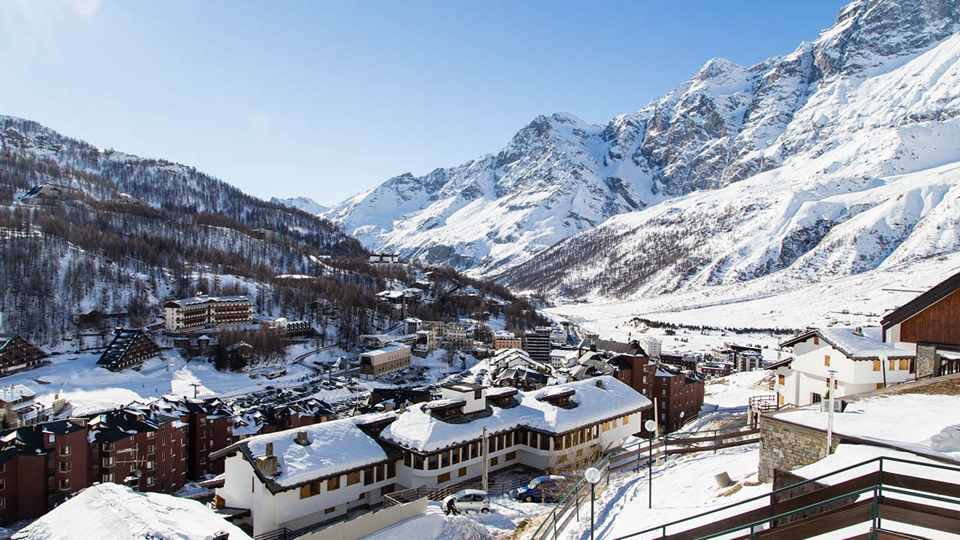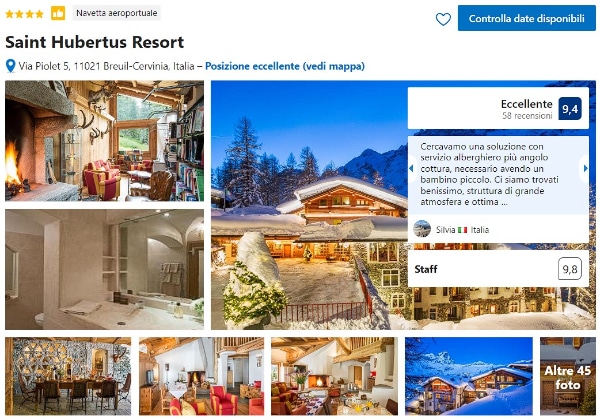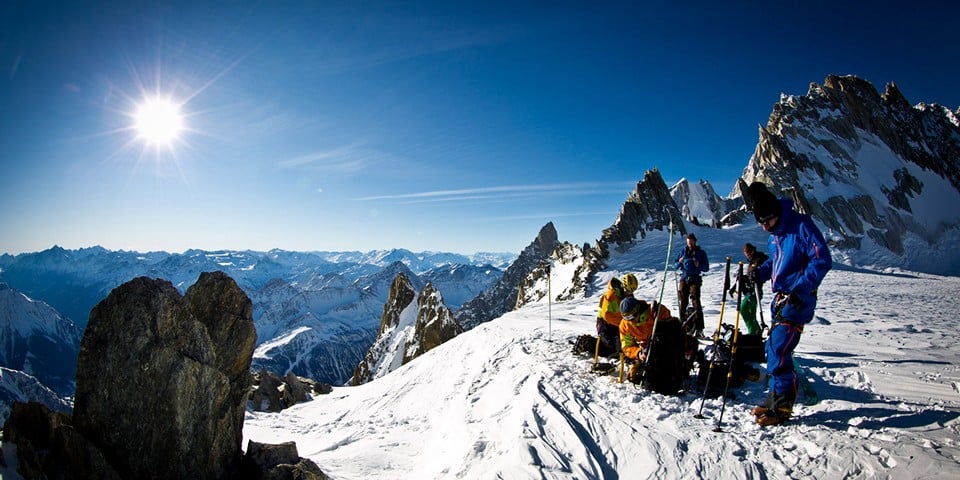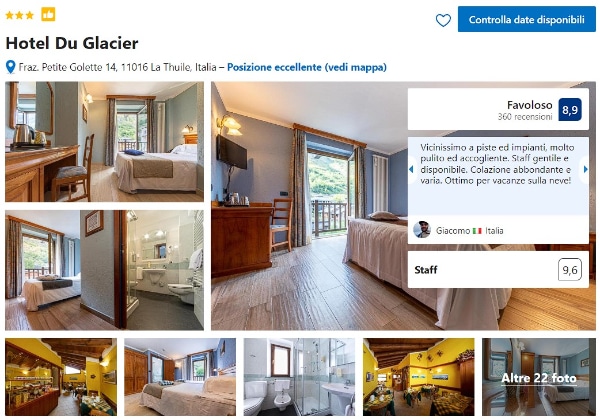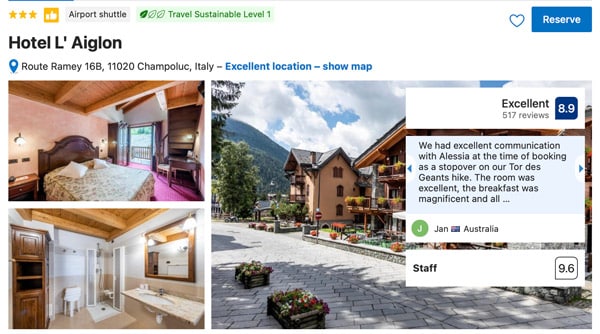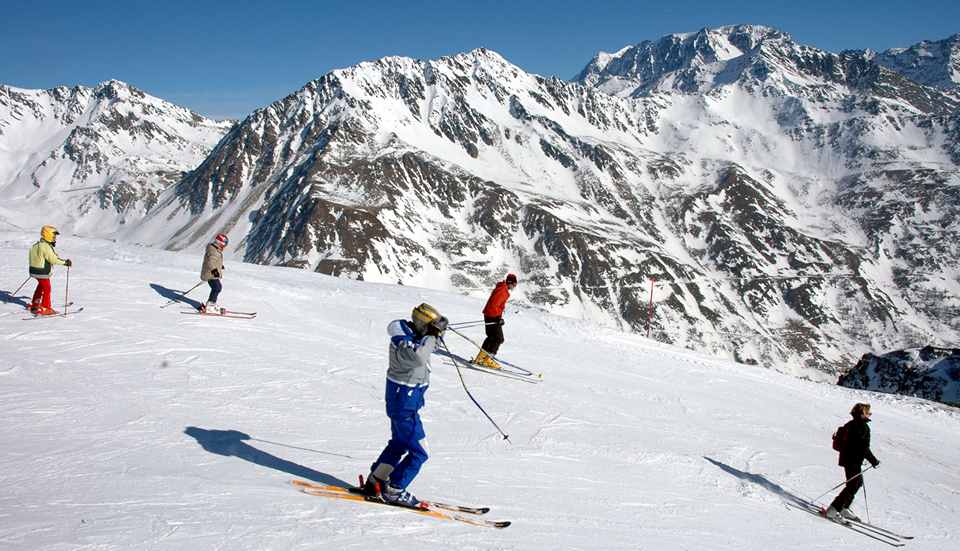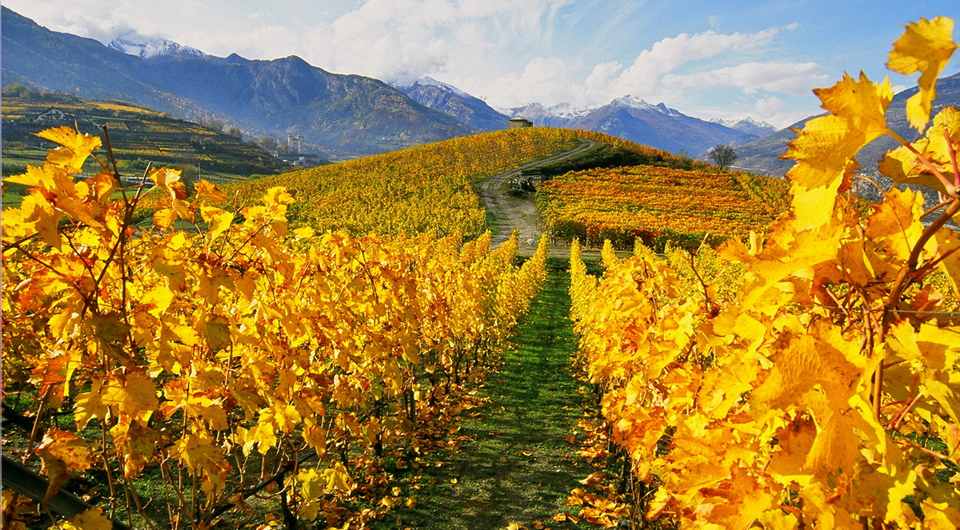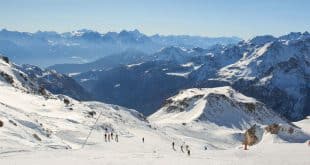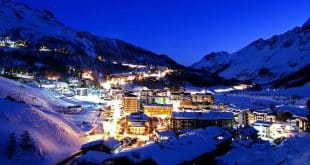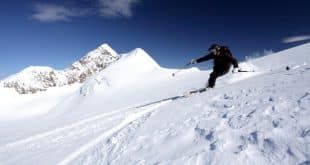Aosta Valley
Valle d’Aosta is an autonomous region of Italy and its smallest province. It is located in the northwest part of the country and shares borders with Switzerland to the north and France to the west.
Due to the presence of Europe’s highest mountain peaks – Mont Blanc, Monte Rosa, and Matterhorn – the region boasts numerous excellent ski resorts and frequently hosts international skiing competitions.
Page Contents
What Should You Know before Visiting the Aosta Valley?
What is Valle d’Aosta known for?
Valle d’Aosta what to do?
Valle d’Aosta what to see?
Interesting Facts about Aosta
- Valle d’Aosta is the smallest and least populous region in Italy, covering an area of 3,263 square kilometers and home to approximately 125,000 people.
- The region boasts a rich history dating back to ancient times, with evidence of Roman and Celtic settlements found throughout Valle d’Aosta.
- Its strategic location in the Alps made it a crucial crossroads for trade and military activities, leading to the construction of numerous castles and fortifications, such as Fénis Castle and Bard Fort.
- Valle d’Aosta is renowned for its pristine natural beauty, including breathtaking peaks like Mont Blanc, the highest mountain in Europe, standing at 4,809 meters.
- The region’s cuisine is a delightful blend of Italian and French influences, with dishes like fontina cheese fondue and hearty meat stews, providing a unique culinary experience for visitors.
General Information
The province has two official languages – Italian and French. In some parts, residents use one of the German dialects – specifically, Walser German. Valle d’Aosta has a population of just over 125,000 people, with one-third residing in the administrative center, the city of Aosta.
Apart from tourism, the region has well-developed energy and black metallurgy industries, thanks to the abundance of rivers in the mountains. The area is also renowned for its cheeses and wines.
Climate and Weather
Valle d’Aosta experiences a unique climate in the Aosta Valley. The seasons’ boundaries seem shifted: summer arrives earlier than usual, already in May, and winter usually sets in as early as November. Spring and autumn pass swiftly, while summer is typically long, dry, and warm, but not excessively hot – with an average July temperature of +21°C (70°F). Local summers are characterized by brief but intense rain showers with thunderstorms. Winter sees heavy snowfall, frequent frosts, yet even in the coldest month, January, the average temperature remains above freezing at 1-2°C (34-36°F).
Getting There
The region is dotted with mountain passes; however, the transportation network is well-developed, featuring numerous roads and railways. Buses regularly connect the settlements, running at half-hour intervals on many routes, making it easy to travel between towns. The nearest major city is Turin, reachable by train in 2 hours.
Most travelers heading to Valle d’Aosta arrive at Turin Airport. The distance between the cities is 100 km (62 miles). Alternatively, one can fly to Milan (read about Milan airports), which is twice as far, at 190 km (118 miles). If you have a Schengen visa, another option is Geneva, which is 150 km (93 miles) away from Aosta. Aosta itself also has an airport, with local flights from Rome’s Fiumicino Airport, but these flights operate on small aircraft, so such a trip requires advanced planning. It is more convenient to use trains or buses. Bus schedules can be found at www.savda.it. The website is in Italian, but it is easy to navigate. Train tickets can be purchased at www.trenitalia.com.
Aosta
The main city of the autonomous region is Aosta. Founded before our era, the city still retains several architectural monuments, such as the Arch of Augustus, the fortress walls with gates, and an amphitheater. The Arch of Augustus has stood in the city since 25 BCE and has a unique appearance for such structures – it lacks the typical superstructure attic, instead featuring a roof added in the early 18th century.
Near the arch, one can find the Praetorian Gate (Porta Praetoria), through which the city could be accessed from the east. The gates are double, with a central arch measuring 7 meters in height for carriages and two smaller lateral arches for pedestrians. The entire structure is quite impressive.
The fortress walls have also been well-preserved, forming a rectangle with sides measuring 727 meters and 574 meters.
Another monument from ancient Roman times is the Villa Romana, or rather, its ruins, which provide an insight into the size and layout of wealthy houses from that period, including rooms and ancillary spaces.
The ancient Collegiate Church of Saints Peter and Ursus (Collegiata dei Santi Pietro e Orso) is an unmissable construction. It was built around the 10th-11th centuries in Romanesque architectural style. The builders used remnants of more ancient structures as the foundation. The church’s inner courtyard, like the surrounding city fortress walls, is built from dark gray stone blocks, giving it a very ancient appearance, despite being constructed in the early 12th century.
- Read tips: Where to Stay in Aosta
Castle’s and Fortresses
In the vicinity of Aosta, there are many medieval castles and fortresses – about seventy of them. Not all are in perfect condition, with some reduced to ruins, but others have been well-preserved. One such example is the Castle of Fenis (Castello di Fenis), built in the early 13th century.
The Castle of Issogne (Castello di Issogne) is located about 40 km away from Aosta. There are speculations that it was built long before the mid-12th century, when it was first mentioned in official documents, suggesting it might have been converted from an ancient Roman villa.
Lastly, Castle of Verrès (Castello di Verrès) is another monumental structure that has survived from the Middle Ages. Its appearance is purely utilitarian – a massive stone cube with few small windows and no decoration.
Ski Resorts in Valle d’Aosta
The unique location of Valle d’Aosta attracts tourists and skiers from all over the world. When they come here, they can enjoy skiing in the slopes of three countries at once: Italy, France, and Switzerland.
Cervinia
One of Italy’s oldest ski resorts is Cervinia. Its ski runs extend along the slopes of the Matterhorn mountain, which stands at a height of 4478 meters. Adventurous skiers can ascend to the highest point and experience a thrilling descent from three and a half thousand meters. There are no resorts in Italy located higher than Cervinia.
The peak season in Cervinia is in December, followed by relative calm in January. In February and March, the slopes around the resort are vibrant with brightly colored ski outfits.
At higher altitudes, the ski season lasts longer, as snow remains throughout the year. There are both highly challenging routes and less extreme, lengthy tracks that allow skiers to enjoy the surrounding nature without the adrenaline rush. However, most of the routes, such as the Bontadini trail, are designed for experienced skiers. Beginners should consider the “blue” slopes in Plan Maison.
A significant advantage of this resort is the well-thought-out layout of the slopes and their diversity. Almost all slopes have “blue” tracks suitable for novices. This means that even those who have just started skiing can explore the surroundings instead of skiing in the same place for two weeks.
Buses operate from Turin and Milan to Cervinia, and one can also find hotels offering transfer services. Accommodation options vary to suit every taste, from luxury hotels like Saint Hubertus Resort to small, economical chalets like L’Ancien Paquier Chambre D’Hotes. The key is to book rooms in advance.
Courmayeur
Courmayeur is considered one of Italy’s most expensive ski resorts. The resort is uniquely surrounded by nearly a dozen peaks over 4000 meters in height. The slopes here are mostly of moderate difficulty, except for a few truly extreme ones. The total length of the slopes is over 100 km.
Everything in Courmayeur is designed to ensure tourists enjoy their stay fully. The area is filled with shops, restaurants, and entertainment venues, while many slopes allow skiing around the clock.
The resort is conveniently located, with easy access from Aosta, and buses run from Milan and Turin, taking around 3.5-4 hours. As a result, the resort can become crowded on weekends, as Italians often come to Courmayeur for one or two days. Due to this, it’s essential to plan your stay in advance, not just concerning your hotel but also where you’ll have dinner each day. Otherwise, you might spend a lot of time searching for a free table, and some restaurants may require prior reservations.
The “black” slopes are concentrated in the Val Veny area. Beginners are better off on Chetif or Prato. The primary skiing area is Checrouit. Courmayeur also offers routes outside the equipped slopes, primarily designed for freeride enthusiasts, both on skis and snowboards. Many of these routes are on the Cresta D’Arp mountain.
For accommodation, we recommend the four-star Auberge De La Maison or the more modest Hotel Crampon.
La Thuile
La Thuile is a small town (La Thuile) located at the foot of Mont Blanc (Mont Blanc), the highest mountain in Europe (excluding the Caucasus peaks); its height is 4,810 meters (4,810 meters). What makes La Thuile stand out is the relatively low number of tourists compared to other resorts in the region, so you won’t have to wait in line for the ski lift. The atmosphere here is more like a tranquil village life, leisurely and unhurried. La Thuile always boasts abundant snow, and the slopes are designed for well-prepared athletes.
La Thuile is part of the unified skiing area of San Bernardo (San Bernardo). You can get here by bus from Courmayeur or from the town of Pré-Saint-Didier (Pré-Saint-Didier), and to Pré-Sen-Didier, in turn, by train from Turin or Milan.
Recommended hotels: the fashionable Niro Montana and the budget-friendly Hotel Du Glacier.
Pila
Pila is a ski resort tailored for beginners. From here, you can simultaneously see all three highest peaks of the Alps: the aforementioned Matterhorn and Mont Blanc, as well as Monte Rosa (Monte Rosa). This resort is not as well-known as others, making it even more appealing due to its tranquility and affordability of services. If you’re just starting to learn skiing, Pila is the perfect destination, offering numerous gentle and wide slopes, such as those in the Grimod area. The skiing season at Pila runs from early December to April.
There aren’t many hotels directly in Pila; most of them are three-star accommodations. However, the resort is conveniently located near Aosta, allowing you to stay in the town center and reach Pila via a ski lift, which takes no more than 20 minutes. If you prefer to be closer to the slopes, you can book a room at the apartment hotel Bellevue Pila or Chaletbethere.
Monte Rosa
In contrast to Cervinia, the Monte Rosa ski resort recently started welcoming skiers. There are about 130 kilometers of slopes, with most of them suitable for intermediate or beginner skiers.
Monte Rosa offers a vibrant experience, with a growing number of bars and restaurants. However, it’s important to note that life here is not as bustling as on older valley resorts; it caters more to those seeking a peaceful vacation.
]You can find accommodation directly at the foot of the mountain slopes, such as Hotel L’ Aiglon, or slightly further with a view of the mountains, like Au Charmant Petit Lac.
Things to Do in Valle d’Aosta
The ski resorts in Valle d’Aosta offer all the comforts for a pleasant vacation. Even if you’ve never skied or snowboarded before, experienced instructors will teach you the basics in just a few days. Many of them have expertise in teaching people with limited abilities, and there are plenty of children’s schools where your child can learn the basics of skiing under the watchful eye of experienced teachers. If you’re here with your family, and not everyone is enthusiastic about spending the whole day on skis, rest assured that there’s something for everyone to enjoy.
The resort towns come alive not only in the evenings when bars and restaurants fill with crowds. During the day, you can visit pools or spa complexes, engage in yoga or fitness, or play bowling. In Cervinia, there’s an ice-kart track with two lanes. In the serene Monte Rosa, you can try dog sledding or take horse riding lessons. Near the Courmayeur resort, there’s a large sports complex offering tennis, golf, ice skating, and rock climbing. In Pré-Saint-Didier, many visitors come to take advantage of the thermal complex services.
For those seeking thrills but unable to experience them through fast descents from nearby peaks, paragliding or hot-air balloon flights are excellent options. Being in close proximity to three of the highest peaks in the Alps opens up almost limitless possibilities for mountaineers.
Wine in Valle d’Aosta
Valle d’Aosta is one of Italy’s major wine regions. The area is particularly known for its white wines, with the grapes maturing at elevations of up to 1,200 meters above sea level, although they account for only 10% of the total wine production.
Since 1971, the wine-producing region of the province has been called DOC Valle d’Aosta. Approximately 2.5 million bottles of wine are produced here each year.
While the total area of vineyards is small, it is impressive in terms of the number of cultivated grape varieties, with over twenty varieties grown. The most common varieties are Petite Arvine, covering 16% of all vineyards, and Nebbiolo, which occupies nearly 10%. The most popular white variety is Prié Blanc, making up over 6% of all plantings.
An interesting fact: it’s quite challenging to find local wines in other Italian provinces. The number of foreign tourists and Italians visiting the region’s resorts is so high that almost all the wine produced is consumed here, within the province’s borders.
 Italy for me From Italy with love
Italy for me From Italy with love

